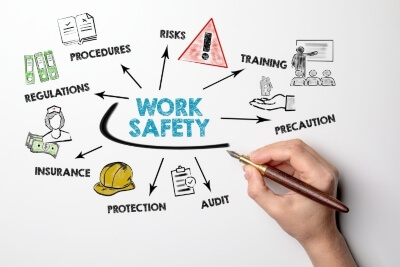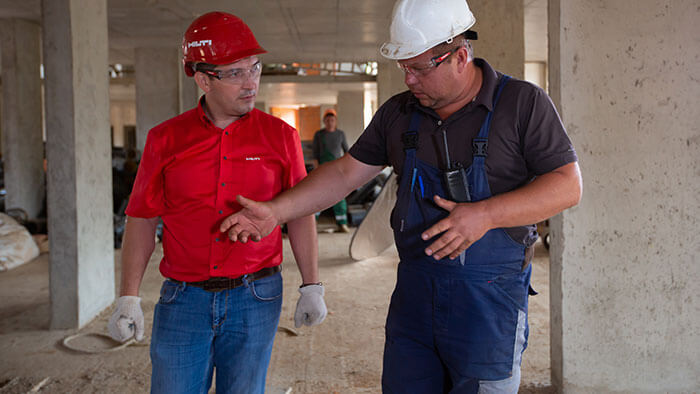In a continuing series covering the elements of what Joint Health & Safety Committees are responsible for, it is prudent to now discuss how to maintain effectiveness.
As a quick recap, a Joint Health & Safety Committee (JHSC) is a collaborative approach to managing the occupational health and safety of the workplace. Worker and management representation ensures that both perspectives are recognized and respected. The recommendation process, otherwise known as the 21-day letter, ensures that decisions are not only made but also implemented.

Workplaces evolve, as does legislation, and industry best practices; therefore, having on-site health and safety resources allows a company to effectively identify potential and actual hazards, and institute control measures that will protect the workforce, supervisors, and the employer. Ultimately, the Joint Health & Safety Committee is responsible for supporting the Internal Responsibility System.
The responsibilities and requirements of the joint health and safety committee are all found in section 9 of the Occupational Health and Safety Act. Topics include:
- Who qualifies to be a worker member S.9(7)(10)
- How they are selected S.9(8)
- Requirement for Co-chairs S.9(11)
- Certification requirement S.9(12)
- Powers of the committee S.9(18)
- Powers of the Co-chairs S.9(19.1)(20)
- 21-day letter (recommendation) S.9(21)
- Requirements for minutes S.9(22)
- Inspection requirements S.9(23)(26)
- Critical injury investigations S.9(31)
- Meeting schedule S.9(33)
Now considering all of the encompassing activities that surround these requirements, it becomes evident that committee time is valuable time. As a trainer, I frequently include time management as part of the exercises while training future or current committee members. If you give a topic too much time, then people seem to go off on tangents, lose focus, and quality of work goes down. If you give people too little time, well then the stress of a time crunch creates a rush. Quality goes down when productivity is given priority. For some areas of an organization that can be an acceptable practice, but not in the context of the JHSC as we are supporting the employer’s health and safety management system.
Now, if you consider a topic like workplace inspections where preparation is critical to establishing an effective inspection, we can take that same logic and apply it to the joint health and safety committee. The tool used to set out in detail how all functions of the committee will be carried out is commonly known as the committee’s Terms of Reference (think like a charter for your organization setting out your mission, vision, and values.)
A Committee’s Terms of Reference
The use of a Terms of Reference is what gives the committee organization. While the Occupational Health and Safety Act does not spell out how a Joint Health and Safety Committee (JHSC) must function, there must be structure that will allow it to be successful. In the event that a very contentious issue was to arise, it is imperative that a formal system is in place so that everyone knows who is responsible for what, and what extent. The terms of reference should be reviewed annually to ensure it fully reflects the needs of the JHSC.
Now the exact structure and operations on an individual JHSC will be organization-specific; there are some commonalities that will be found. When discussing the importance of the terms of reference in a course – I cover the following aspects that should be covered by all committees:
- The JHSC structure must comply with the legislated requirements
- Define the roles of the Co-Chairs
- Who will act in an alternate capacity, when will they do so, and what are the limitations
- Establish a JHSC meeting schedule including where and when ensuring there is at least one meeting quarterly
- Establish a workplace inspection schedule including who inspects – where and when
- Protocol determines the attendance of additional resource personal such as subject matter experts
- Who will be the certified management and worker members – Who will exercise “Certified Member” powers (bilateral work stoppage)
- What does the recommendations process look like (21-day letter)
- The use of statistics and other health and safety information
- What is the procedure for accident investigations and which worker member will conduct the investigations
- What will accident, and near-miss reporting look like to the committee
- Establish the procedure for selection of worker members to participate in:
- Work refusals
- Workplace testing
- MOL inspector liaison
- How documentation will be handled, such as:
- Taking meeting minutes
- Circulating and posting of minutes
- Preparation and circulation of agendas
- What will be required to establish a quorum for a committee meeting
- How consensus is established at meetings, and a procedure for dispute resolution
- A regular review of responsibilities
Now, if the above list looks like there are many factors that need to be considered in running an effective JHSC – you’re right. However, if a committee focuses its efforts into establishing its operating parameters before it is bogged down with worker complaints, hazards reported to supervisors, and even accident investigations – it will be better suited to be effective in these tasks. Employers place a lot of emphasis on organization because it creates efficiencies that help the bottom line. A committee can do the same if it is willing to do the work to set it all in place.
As mentioned above, committee time is valuable time – so when will this get done? Do not worry the Occupational Health and Safety Act has your back on this one too! It states “A member of a committee is entitled to, one hour or such longer period of time as the committee determines is necessary to prepare for each committee meeting” S.9(34)(a). So it is obvious that the intent of the legislation is to give adequate time to be effective. The question is now, how well does you committee manage its time versus its responsibilities? It’s an ongoing process that can start today.
Geoff Rowatt | CHRP | Safety Trainer





